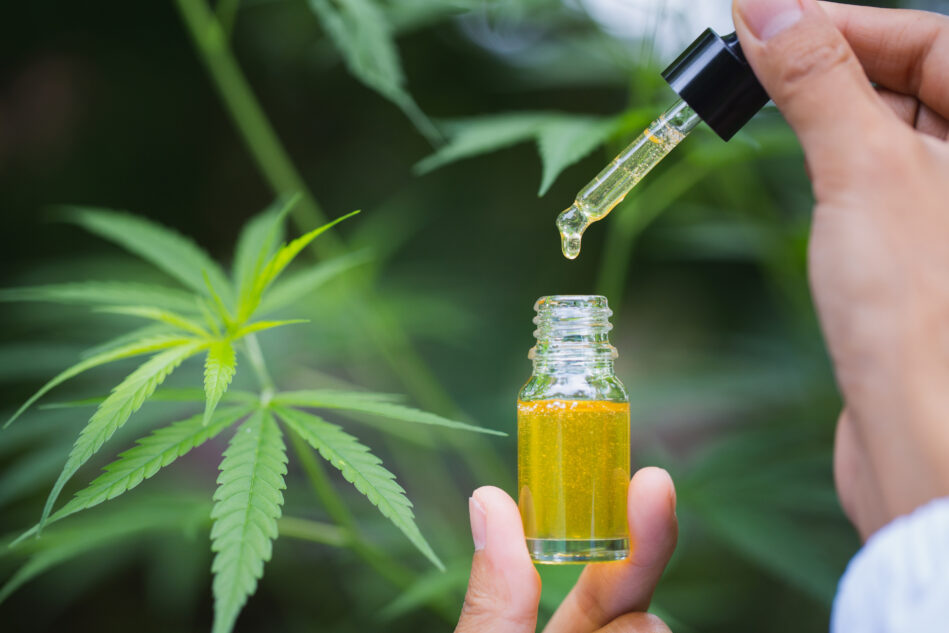Brandy Gomez-Duplessis started using CBD hemp oil in 2017 to treat chronic pain caused by a host of illnesses — lupus, Lyme disease, asthma and rheumatoid arthritis — after a rheumatology nurse told her it’s something “on the black market” that might help relieve her pain and minimize the need for other drugs like opioid painkillers.
Opioids are known for their potentially debilitating side effects as serious as dependence and other lesser results like drowsiness. CBD, an abbreviation for cannabinoid, is found in the cannabis or marijuana plant and has gained popularity as a treatment for physical pain and anxiety.
Today, Gomez-Duplessissays, “I am still using [CBD hemp oil] and also other items like the [CBD] lotions for my joints and cream for my feet. When the flare-up is bad and I need faster relief, I also eat the [CBD] gummies.”
When she first asked doctors about CBD three years ago, they “spoke negatively” about it. As a result, she tried trial and error on her own to figure out which doses of which products to take during the day and at night.
Like any drug, cannabis products such as CBD can produce side effects. Among them are nausea, fatigue and irritability. They can also interact with other drugs. For example, they can enhance the effects of blood thinners. If a product contains only CBD, you won’t feel high, but if it also has THC (tetrahydrocannabinol is one of at least 113 cannabinoids identified in cannabis), which boosts pain-killing properties, you may feel intoxicated. Because of those properties, it’s important to take precautions when you start treatment.
“There’s pretty good evidence that [cannabis products] could be used [to lessen] chronic pain,” says Brian Piper, MS, PhD, a neuroscientist at the Geisinger Commonwealth School of Medicine. “Not only is there clinical evidence, but there’s also basic science and rat and mouse evidence that the combination of opioids and cannabinoids can decrease the amount of opioids required.”
While studies on rats and mice hint at effectiveness in humans, randomized controlled trials in humans have been limited. No clinical consensus exists on how to dose CBD or THC for patients with chronic pain. That can mean many patients, like Gomez-Duplessis, are left trying to figure it out on their own. The issue is complicated further by the fact that cannabis products aren’t regulated or approved by the FDA, which results in a wide range of quality and purity issues.
A CBD and THC Dosing Proposal
While using the drug gabapentin to control his chronic sciatica pain, Noah Kotlove got so drowsy that he could only take it at night. During the day, he relied on OTC painkillers, until drugs like Advil and Tylenol caused him to develop gastritis, an inflammation of the stomach lining that increases a person’s risk of cancer and ulcers. Four months ago, Kotlvoe tried CBD and THC. Like Gomez-Duplessis, he used them by trial and error before settling on the doses that work. While he says relief from physical pain using CBD and THC isn’t quite as effective as gabapentin, his days are no longer disrupted by side effects like exhaustion and gastritis. That outcome is what is most important to him.
In the future, patients and doctors may not have to use trial and error.
An international group of researchers called the Global Task Force on Dosing and Administration of Medical Cannabis in Chronic Pain proposed dosing guidelines for both CBD and THC in September at PAINweek 2020, an annual pain management conference. Piper calls this “an important step, but just one step of many that would be necessary for [cannabis products] to get integrated a little bit more widely” in the treatment of chronic pain. Lillie Rosenthal, DO, who works with pain patients in New York City also emphasizes that there’s a long way to go, while adding that the new guidelines aren’t “not a significant game changer yet it does help legitimize as a treatment option.”
For most patients, the guidelines recommend that doctors start by treating them with 5mg of CBD twice per day and gradually increase the dosage until it provides effective pain relief. If their dosage hits 40mg and they are still in pain, the doctor can add THC, starting at 2.5mg per day. Patients should not take more than 40mg of THC daily. If patients are elderly, have comorbidities or are taking several drugs, THC doses should be started at 1mg and increased slowly because the patients may be more sensitive to the treatment or interactions with other drugs. Lastly, patients with a history of cannabis use and severe pain can start with a slightly higher dose that combines both ingredients.
Varied Formulations and Regulations
New York, where Rosenthal practices, has a statewide medical marijuana program. If a patient comes to Rosenthal, she can certify them for the program based on their condition. Then the patient meets separately with a pharmacist who specializes in cannabis to prescribe the right product and dose and review potential interactions with other drugs. Both Rosenthal and the pharmacist are required to take extra courses to prepare them to provide these services. She emphasizes that this is a “very rigorous program. [A patient] can’t just go to [the pharmacy] Duane Reade and get medical cannabis.”
The new guidelines from the international task force refer to pharmaceutical-grade CBD and THC taken orally. Piper points out that that’s not necessarily what all patients are using to treat their pain.
While THC is illegal or at least requires a prescription in most states, CBD is legal and available as a supplement at many stores and online, meaning guidance from a medical professional is not required.
Epidiolex, which treats seizures associated with certain rare conditions, is the only FDA-approved cannabis-derived medication. Companies sell products ranging from capsules and oils to gummy bears, lotions and even clothing that claim to contain CBD and THC or both as supplements. Supplements are not regulated as stringently as medications. Also, there’s not always truth in advertising among CBD providers. About 30% of CBD products tested by the FDA were found lacking in the amount of the substance they stated on labels, according to an agency report in July 2020.
“We now have this separate system for prescription drugs and then we have this other system for complementary and alternative medicines. And we have this third system that could bridge elements of both for many cannabinoids,” says Piper. “We currently have many formulations of [over-the-counter, OTC] CBD outside of standard medicine. ”
It’s best to have your healthcare provider and pharmacist help you find the most reliable products, but if you choose to try on your own, there is help from sound sources online. Healthline, for example, published a guide to reading CBD product labels and recommends confirming that a product has a certificate of analysis, which means it was tested by a laboratory separate from its manufacturer.
“There [are] side effects with every medication, but cannabis [side effects are] very, very safe,” adds Rosenthal, while reiterating the primary rule doctors learn early in medical school: “First, do no harm.”






